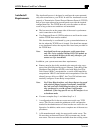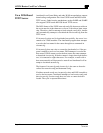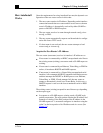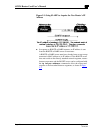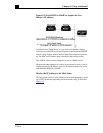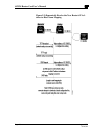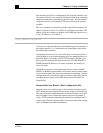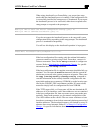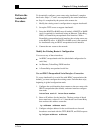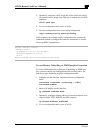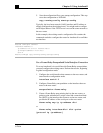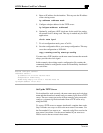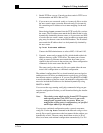
Chapter 5: Using AutoInstall
August 1997 Page 5-9
2524UM
The network-confg file is a configuration file generally shared by sev-
eral routers. In this case, it maps the IP address of the new router (just
obtained dynamically) to the name of the new router. The file network-
confg must reside on a reachable TFTP server and must be globally
readable.
This is an example of a minimal network-confg file that maps the IP
address of the new router (131.108.10.2) to the name newrouter
.
The
address of the new router was learned via SLARP and is based on
ex-
isting
's IP address of 131.108.10.1.
ip host newrouter 131.108.10.2
If you are not using AutoInstall over Frame Relay, the host portion of
the address must be 1 or 2. AutoInstall over Frame Relay does not hav
this addressing constraint.
If newrouter does not receive a network-confg or a cisconet.cfg file, or
if the IP address-to-host-name mapping does not match the newly ac-
quired IP address, newrouter sends a DNS broadcast. If DNS is con-
figured and has an entry that maps newrouter's SLARP, BOOTP, or
RARP-acquired IP address to its name, newrouter successfully re-
solves its name.
If DNS does not have an entry that maps the new router's SLARP,
BOOTP, or RARP-acquired address to its name, the new router cannot
resolve its host name. The new router attempts to download a default
configuration file as described in the next section, and failing that, en-
ters setup mode or enters user EXEC mode with AutoInstall over
Frame Relay.
Download the New Router's Host Configuration File
After the router successfully resolves its host name, newrouter sends
TFTP broadcast requesting the file newrouter-confg or newrouter.cfg.
The name newrouter-confg must be in all lowercase letters, even if th
true host name is not. If newrouter cannot resolve its host name, it
sends a TFTP broadcast requesting the default host configuration fil
router-confg. The file is downloaded to newrouter, where the configu-
ration commands take effect immediately.




